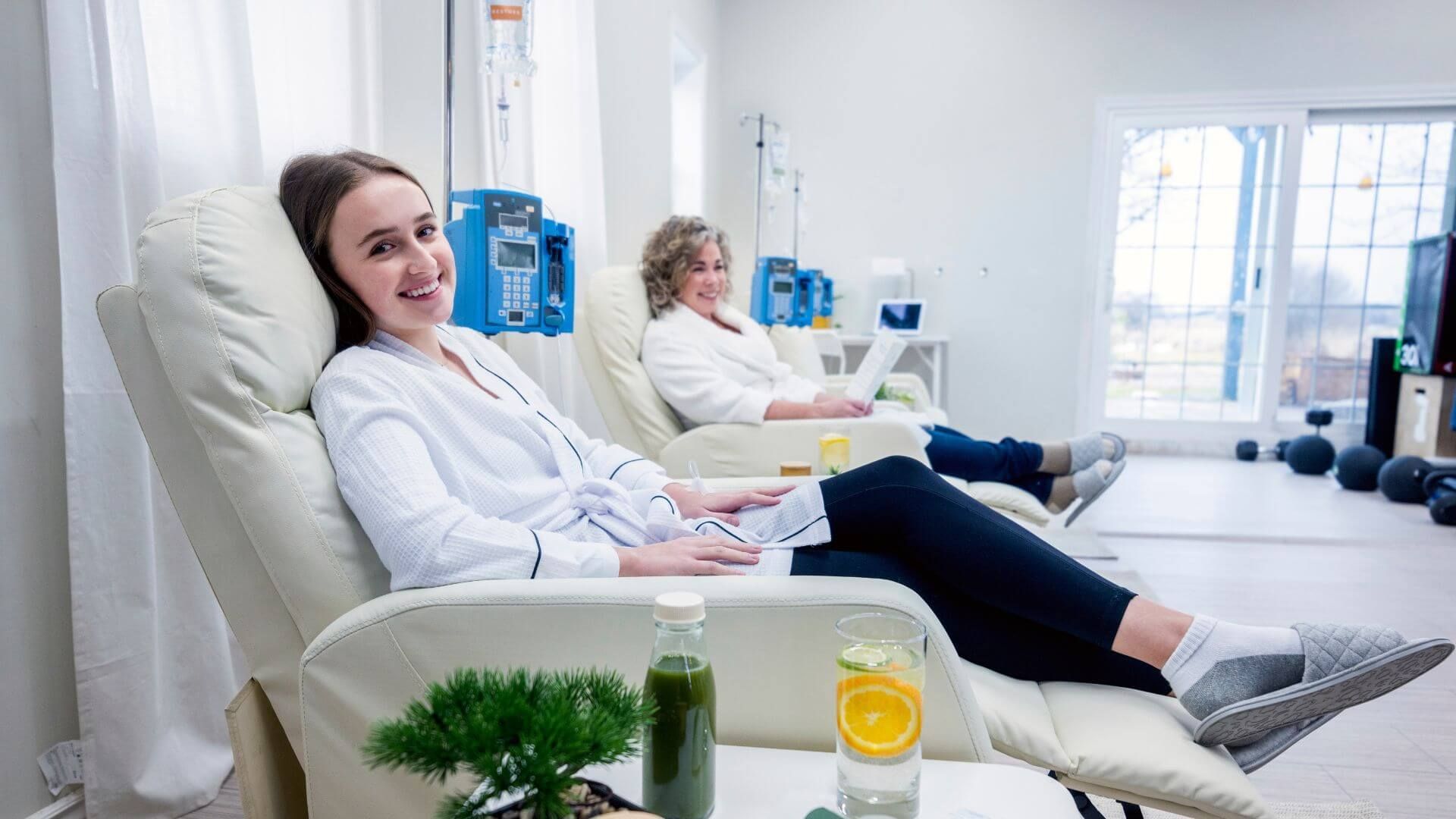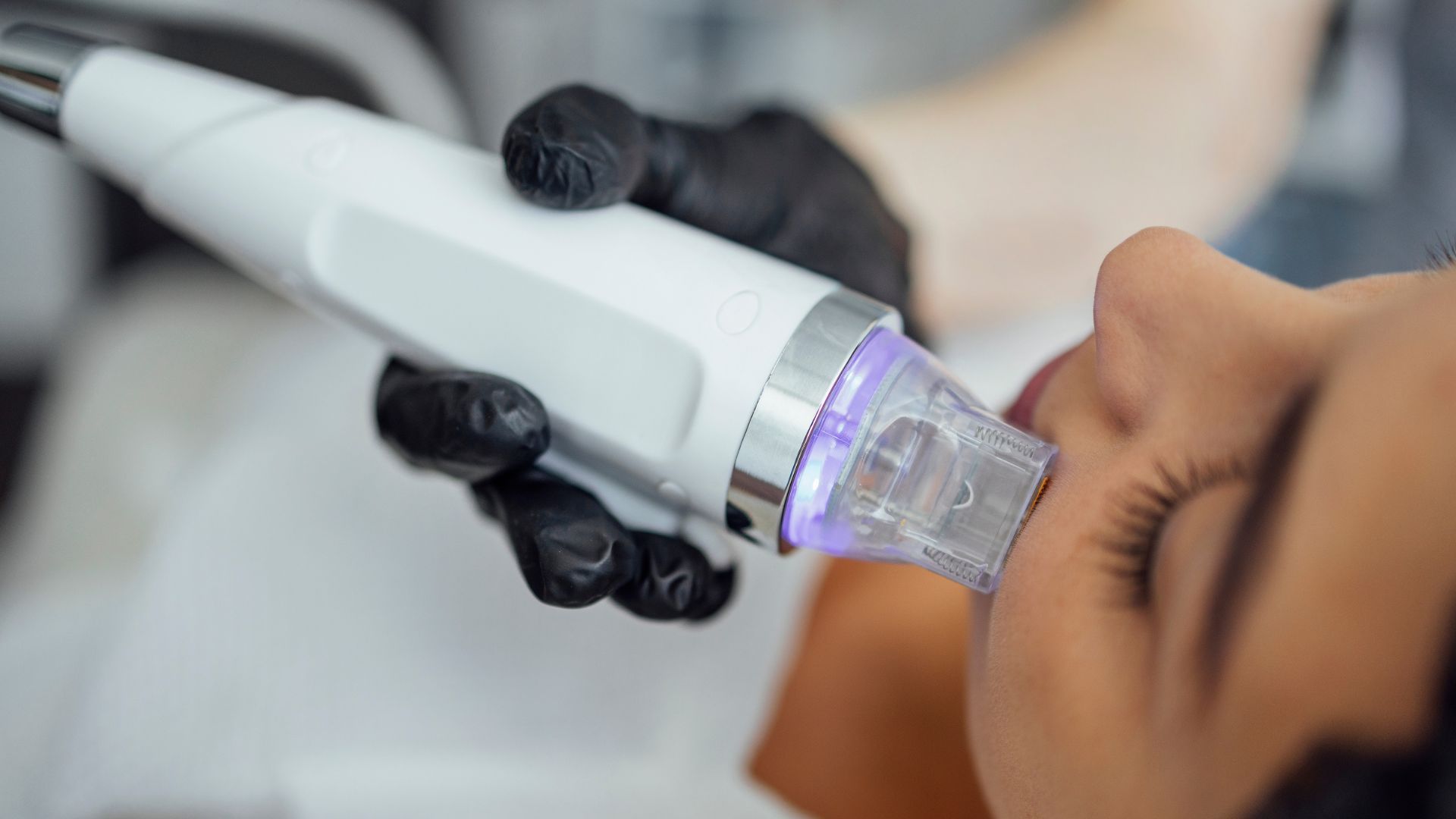Body Scientific Aesthetics
Everything You Need to Know About IV Therapy and Its Various Health Benefits in Towson MD
In recent years, IV therapy has gained incredible popularity as a versatile and efficient method for improved wellness and health. Short for intravenous therapy, IV therapy involves the direct administration of nutrients, vitamins, and medications into the bloodstream, offering rapid absorption and immediate effects. This treatment has been embraced in Towson, MD, not only for medical purposes but also for boosting overall health, enhancing athletic performance, and speeding up recovery from various conditions.
Whether you're looking to combat fatigue, rehydrate after a strenuous workout, or improve your immune system, IV therapy provides a range of benefits tailored to meet diverse health needs. This guide will delve into everything you need to know about IV therapy, including its types, benefits, and why it has become a favored option among residents of Towson, MD.
Introduction to IV Therapy: An Overview of Its Rise in Popularity
The Growing Trend of IV Therapy
IV therapy, also known as intravenous therapy, has experienced a substantial rise in popularity over recent years. This trend can be attributed to its versatile applications and its immediate effectiveness in delivering essential nutrients, vitamins, and medications directly into the bloodstream. The concept is simple yet powerful: by bypassing the digestive system, IV fluid and IV vitamin therapy ensure that the body absorbs the maximum amount of nutrients needed for optimal function.
Types of IV Therapy
IV therapy encompasses various types, each designed to address specific health concerns. IV vitamin therapy is one of the most sought-after treatments, known for boosting energy levels and enhancing overall well-being. For those with critical health conditions, such as severe dehydration, or those who are critically ill patients, IV therapies play an indispensable role in facilitating recovery through the rapid administration of intravenous fluids and medications.
Key Components of IV Therapy
- IV Medication: Administering medications via an IV bag allows for rapid onset of action, beneficial for treating acute health issues.
- Peripheral Intravenous Catheters: These are commonly used for short-term administration of intravenous fluids and medications.
- Central Venous Catheters and Peripherally Inserted Central Catheters (PICC): Used for long-term IV access and patients requiring extensive treatments, such as those receiving continuous IV infusion.
- IV Tubing and Infusion Pump: Ensure accurate and controlled delivery of fluids and medications to the IV access site.
- IV Access Sites: Include peripheral sites on the arms and hands, as well as central sites accessed via central venous catheters for patients needing prolonged treatments.
Health Benefits and Applications
The applications of IV therapies extend beyond just treating illnesses. For active individuals, IV fluids can expedite rehydration post-exercise, while vitamin therapy can boost the immune system, aiding in the prevention of common illnesses. Medical professionals often advocate for IV therapy in managing fluid overload, ensuring that patients maintain an optimal balance of fluids and electrolytes.
Cost and Accessibility
While the IV therapy cost can vary significantly based on the type and length of treatment, the benefits often justify the expense for many. Residents in Towson, MD, for instance, find value in the immediate and tangible benefits of IV infusion, driving the local popularity of such treatments in wellness and recovery.
The rise of IV therapy's popularity is a testament to its effectiveness in addressing a broad spectrum of health needs. Whether it's through rapid intravenous access for critically ill patients or routine vitamin therapy for wellness enthusiasts, IV therapy continues to gain traction among various demographics. As advancements in medical technology improve, the efficiency and accessibility of IV therapy are likely to expand, offering even more options for maintaining and enhancing health.
How IV Therapy Works: Understanding the Basics of Intravenous Access

Intravenous (IV) therapy is a fascinating and essential medical process that involves the direct administration of fluids and medications into a patient's bloodstream. Here's a closer look at its fundamental principles, key components, and functioning.
Venous Access: The Foundation of IV Therapy
To begin IV therapy, healthcare providers must establish venous access. This process involves inserting an IV catheter into a patient's blood vessels, typically in peripheral sites such as the arms or hands. Peripheral Intravenous Catheters are commonly used for short-term treatments, while Peripherally Inserted Central Catheters (PICC), Central Venous Catheters (also known as central lines), and central lines are reserved for long-term or extensive therapies.
Setting Up the IV Line
Once venous access has been established, an IV line consisting of primary tubing is connected to deliver the IV solution. The IV catheter is secured in place to ensure stability, and an IV pole is used to hang the IV bags containing the necessary fluids or medications.
Types of IV Fluids and Their Uses
Primary Infusion and Secondary Infusion
The primary infusion administers essential fluids like normal saline, packed red blood cells, and solutions designed to correct electrolyte imbalances. A secondary infusion or IV piggyback can also be connected to the primary tubing to administer additional medications or fluids through the same IV site.
Delivering Medications and Fluids
IV medications and fluids can be delivered in several ways:
- IV Push: A direct injection of medication into the IV line for rapid administration.
- Intermittent Infusion: Administering a set amount of fluids over a specific period.
- Continuous Infusion: A steady and consistent delivery of fluids or medications over time.
- IV Pushes: Commonly used for quick administration of medications like Vitamin C to boost immune response.
Monitoring and Adjusting Flow Rates
Healthcare providers closely monitor the fluid rate to ensure the patient receives the correct amount of fluid or medication. Adjusting the flow rate is crucial, especially for patients prone to fluid overload or those needing precise fluid management.
Advanced Techniques and Equipment
In some cases, additional techniques and equipment are employed:
- Medical Imaging: Utilized to place catheters accurately, especially in complex cases.
- Warm Compresses: Applied to the IV site to ease discomfort and maintain vascular access.
- IV Push and Systematic Review: Techniques for rapid medication delivery and ensuring systematic accuracy of IV therapy.
- Electrolyte Balance: Monitored and adjusted to prevent or correct imbalances.
Complications and Troubleshooting
Though highly effective,
IV therapy can present challenges such as swelling from too much fluid or issues with blood pressure. Proper placement of the IV catheter, monitoring of electrolyte balance, and timely intervention for potential complications are critical.
Application in Various Medical Settings
IV therapy is indispensable in hospital settings for treating medical conditions requiring rapid and efficient delivery of nutrients, medications, and fluids. It supports patients with parenteral nutrition, those needing secondary medications, and those undergoing intermittent or continuous infusion treatments.
Understanding the basics of intravenous administration and the importance of key components such as the IV catheter, IV line, and fluids involved is crucial for both medical professionals and patients. IV therapy not only facilitates rapid treatment but also ensures optimal health outcomes across various medical settings.
Different Types of IV Therapy: Tailoring Treatments to Individual Needs

Intravenous (IV) therapy is a versatile and customizable treatment approach that can be adapted to meet the unique needs of each patient. The type of IV therapy chosen depends on several factors, including the patient’s medical condition, the duration of treatment, and the specifics of the medication or fluids required. Here are the various types of IV therapy and how they are tailored to individual needs.
Peripheral IV Therapy
Peripheral IV therapy is commonly used for short-term treatments. A small plastic tube, known as a peripheral intravenous catheter, is inserted into a vein in the arm or hand. This type of therapy is ideal for receiving IV fluids like saline solution and for the administration of secondary medications.
Peripherally Inserted Central Catheter (PICC)
A Peripherally Inserted Central Catheter (PICC) is used for long-term treatments and involves threading a catheter through a peripheral vein into a central vein near the heart. PICC lines are beneficial for patients requiring repeated access to delivering medications or fluids over an extended period. The central location allows for the administration of more concentrated medications.
Central Venous Catheters (Central Lines)
Central venous catheters, or central lines, are used in hospital settings for critically ill patients or those needing prolonged therapy. These catheters are inserted into large veins directly leading to the heart. They are essential for delivering large volumes of fluids and high-concentration medications that peripheral veins cannot handle.
Secondary Tubing and Medications
Secondary tubing is often employed for adding additional medications or fluids to the primary IV line. This method, known as an IV piggyback, allows healthcare providers to administer a secondary medication without interrupting the primary infusion, ensuring continuous treatment.
Saline Locks
A saline lock is used for patients who require intermittent IV access. It involves an access port placed within the vein, connected to a small plastic tube that keeps the vein open. This method allows for easy administration of medications and fluids when needed, without keeping the patient hooked to an IV line continuously.
Monitoring and Preventing Complications
Proper monitoring is crucial to prevent complications during IV therapy. Infiltration occurs when fluids leak into the surrounding tissue due to displacement of the catheter. To prevent this, healthcare providers must frequently check the IV site and apply pressure if necessary, ensuring that the affected limb is attended to promptly.
Advanced Techniques in IV Therapy
Advanced techniques such as the use of medical imaging for catheter placement and the application of warm compresses for comfort are also significant. In complex cases, these techniques help ensure precise placement and efficient vascular access.
Applications in Various Medical Settings
IV therapy is indispensable in various medical settings, including hospital settings where quick and efficient circulatory system access is essential. Whether it’s for administering parenteral nutrition, treating electrolyte imbalances, or continuous medication infusion, the flexibility of IV therapy makes it a cornerstone of modern medical treatment.
Understanding different IV therapy types and their tailored applications ensures that patients receive the best possible care, catering to their specific medical needs with precision and efficiency.
The Science Behind IV Vitamin Therapy: Rapid Absorption and Immediate Effects

Intravenous (IV) vitamin therapy capitalizes on the body's ability to rapidly absorb nutrients directly into the bloodstream, resulting in immediate and highly efficient delivery. This innovative treatment promises enhanced wellness and improved health outcomes by ensuring that essential vitamins and minerals bypass the digestive system and are instantly available for cellular uptake.
Mechanisms of Rapid Absorption
When vitamins are administered intravenously, they are delivered straight into the circulatory system, entirely bypassing the gastrointestinal tract. This method of administration prevents the loss of vitamins during digestion and first-pass metabolism, where a significant portion of oral supplements might be degraded or excreted before becoming bioavailable. IV vitamin therapy ensures that the full dosage provided is accessible for immediate cellular use, leading to a quicker onset of beneficial effects.
Cellular Impact and Nutrient Uptake
Once in the bloodstream, these vitamins and minerals can rapidly diffuse into cells throughout the body. This direct cell access is particularly beneficial for individuals with compromised digestive functions or malabsorption issues, as it guarantees the effective delivery of essential nutrients. The enhanced bioavailability helps in revitalizing cellular processes more efficiently than oral supplementation, leading to improved cellular functions and overall health.
Immediate Physiological Effects
The immediate effects of IV vitamin therapy can be attributed to the direct infusion of high concentrations of vitamins and minerals. Patients often report feeling rejuvenated and more energetic shortly after the therapy session. This immediate boost can be particularly advantageous for individuals suffering from fatigue, immune deficiencies, or undergoing high-stress conditions. The therapy aids in rapidly replenishing depleted nutrient stores, supporting metabolic processes, and bolstering the immune system.
Applications and Benefits
IV vitamin therapy is versatile in its applications, ranging from routine wellness boosts to targeted medical support. Athletes may use it for quick recovery and enhanced performance, while patients combating chronic illnesses may benefit from its immune system support and overall wellness improvement. Additionally, individuals seeking detoxification, anti-aging benefits, or relief from acute conditions like migraines may find immediate and long-lasting relief through this therapy.
Safety and Considerations
While IV vitamin therapy offers numerous benefits, it's crucial to administer these treatments under professional supervision. Proper dosages and procedures must be followed to avoid potential complications such as nutrient overload or allergic reactions. A healthcare professional will tailor the IV cocktail based on individual health needs and monitor the patient during the treatment to ensure safety and efficacy.
Intravenous vitamin therapy's science-backed approach to nutrient delivery underscores its rapid absorption and immediate effects, making it a valuable addition to modern health and wellness practices.
Key Benefits of IV Therapy: From Hydration to Health Optimization
Enhanced Hydration
One of the primary benefits of IV therapy is its ability to provide immediate and effective hydration. Dehydration can lead to a myriad of health issues, including headaches, fatigue, and impaired cognitive function. IV fluids infused directly into the bloodstream help quickly restore optimal hydration levels, ensuring that cells receive the water they need to function efficiently. This is particularly useful for athletes, individuals recovering from illness, or anyone needing rapid rehydration.
Nutrient Delivery and Absorption
IV therapy ensures 100% bioavailability of vitamins and minerals, as they bypass the digestive system and enter directly into the bloodstream. This mode of delivery guarantees that the nutrients reach their target cells swiftly and efficiently. This is especially beneficial for individuals with malabsorption issues or chronic digestive problems, ensuring they get the full dose of essential nutrients necessary for their health and well-being.
Enhanced Energy Levels
Many patients report an immediate boost in energy following an IV therapy session. The direct infusion of vitamins such as B-complex and minerals vital for energy production can help combat fatigue and enhance overall physical and mental performance. This benefit is particularly advantageous for those dealing with chronic fatigue, high levels of stress, or the demands of a busy lifestyle.
Immune System Support
IV therapy can be tailored to include vitamins and minerals that bolster the immune system, such as Vitamin C, zinc, and selenium. These nutrients play a critical role in fortifying the body's defenses against infections and diseases. Regular IV therapy sessions can help maintain a robust immune system, reducing the frequency and severity of illnesses.
Rapid Recovery
Athletes and fitness enthusiasts often turn to IV therapy for quicker recovery times post-exercise or competition. The immediate replenishment of fluids, electrolytes, and essential nutrients helps reduce muscle soreness, speed up recovery, and enhance overall performance. This therapeutic approach allows athletes to maintain optimal performance levels and reduce downtime between training sessions.
Detoxification
IV therapy can aid in detoxification by flushing toxins from the body and supporting liver function through the inclusion of specific nutrients like glutathione and Vitamin C. By promoting efficient detoxification processes, IV therapy helps improve overall health and resilience against environmental and dietary toxins.
Anti-Aging and Aesthetic Benefits
The infusion of antioxidants and essential nutrients can also contribute to improved skin health and a more youthful appearance. IV therapy can help combat the effects of aging by promoting collagen production, reducing oxidative stress, and improving skin hydration and elasticity. This makes it a popular choice for individuals seeking to enhance their aesthetic appearance and overall vitality.
Customized Treatments
One of the most significant advantages of IV therapy is its versatility and customizability. Healthcare providers can tailor IV cocktails to meet the specific needs of each patient, addressing particular health concerns and optimizing individual health outcomes. This personalized approach ensures that each patient receives the precise combination of nutrients required for their unique health profile.
Whether it's for hydration, nutrient delivery, or health optimization, IV therapy offers a broad spectrum of benefits that can enhance overall well-being and quality of life.
IV Therapy for Enhanced Athletic Performance: Boosting Energy and Recovery
Immediate Energy Boost
Athletes often face intense physical demands that can drain energy levels and reduce peak performance. IV therapy provides an immediate boost of energy by delivering essential vitamins and minerals directly into the bloodstream. Infusions typically include B-complex vitamins, which play a crucial role in energy production and metabolism, resulting in immediate and sustained energy enhancements. This quick replenishment can help athletes maintain high energy levels during competitions or strenuous training sessions.
Accelerated Muscle Recovery
Intense physical activity can lead to muscle strain and damage, causing soreness and prolonging recovery times. IV therapy aids in faster muscle recovery by supplying amino acids and antioxidants like glutathione directly to muscle tissues, which helps repair damage and reduce inflammation. The rapid delivery of these nutrients can significantly diminish muscle soreness and accelerate recovery, allowing athletes to resume their training regime quicker with less downtime.
Enhanced Hydration
Adequate hydration is vital for athletic performance, influencing muscle function, endurance, and overall physical stamina. IV fluids ensure faster and more efficient rehydration compared to oral intake. By bypassing the digestive system, these fluids allow for immediate replenishment of lost electrolytes and fluids, maintaining optimal hydration levels necessary for high-performance activities.
Optimal Nutrient Absorption
Digestive issues or poor diet can sometimes prevent athletes from absorbing necessary nutrients effectively. IV therapy ensures all delivered nutrients are fully absorbed, maximizing the benefits of vitamins, minerals, and other essential compounds. This optimal nutrient uptake is particularly beneficial for athletes who require higher amounts of specific nutrients to support their training and recovery needs.
Reduction of Oxidative Stress
Strenuous physical activities can increase the production of free radicals, leading to oxidative stress which can impair performance and increase injury risk. IV therapy can include antioxidants such as Vitamin C and glutathione to combat these free radicals. Reducing oxidative stress not only helps in accelerating recovery but also in improving overall athletic performance and reducing the likelihood of injury.
Customizable Treatment Plans
Every athlete has unique requirements based on their sport, training intensity, and individual health profiles. One of the greatest advantages of IV therapy is its customizability. Healthcare providers can design specific IV cocktails tailored to meet the precise needs of each athlete, ensuring that they receive the optimal mix of nutrients to support their performance, recovery, and overall health goals.
Leveraging IV therapy for enhanced athletic performance provides a proactive approach to health, allowing athletes to perform at their best, recover swiftly, and maintain peak physical condition.
Combatting Fatigue: How IV Therapy Can Restore Your Energy Levels
Understanding Fatigue
Fatigue is a common issue that can result from various factors including stress, lack of sleep, poor nutrition, and underlying health conditions. It manifests as a constant feeling of tiredness, reduced energy, and diminished concentration, which can severely impact daily life and productivity.
The Role of IV Therapy
IV therapy offers an effective solution for combating fatigue by delivering a powerful mix of vitamins, minerals, and amino acids directly into the bloodstream. This method ensures rapid absorption and utilization of nutrients, providing immediate relief from fatigue symptoms.
Key Nutrients for Energy Restoration
Certain nutrients are crucial in fighting fatigue and boosting energy levels. B-vitamins, particularly B12, play a pivotal role in energy production and metabolic functions. Magnesium aids in muscle relaxation and enzyme functions while Vitamin C supports adrenal gland health, which can be essential for stress management and energy levels.
Immediate Effects
One of the significant advantages of IV therapy for fatigue is the immediacy of its effects. Many patients report feeling more energized, alert, and focused soon after the therapy session. This immediate boost can help jumpstart activities and improve overall mood and productivity.
Long-Term Benefits
In addition to providing immediate relief, regular IV therapy sessions can contribute to long-term energy enhancement. By addressing nutritional deficiencies and improving overall nutrient absorption, IV therapy helps to sustain energy levels over time, reducing the risk of recurring fatigue.
Tailored Treatment Plans
Every individual's fatigue can stem from different causes. IV therapy allows for customized treatment plans where healthcare providers can adjust the nutrient composition based on individual needs and underlying factors contributing to fatigue. This personalized approach ensures maximum efficacy and targeted relief.
Supporting Overall Health
Combating fatigue with IV therapy also supports overall health. The infusion of essential nutrients bolsters the immune system, improves cellular function, and promotes healthy metabolism, which are all critical for maintaining long-term vitality and well-being.
By integrating IV therapy into a comprehensive health strategy, individuals can not only address fatigue but also enhance their overall quality of life, restoring energy levels and maximizing daily performance.
Get in Touch with Body Scientific Aesthetics
Are you ready to rejuvenate your body, boost your performance, and leave behind the burdens of fatigue, lethargy, jet lag, sinus infections, and depression? Packed with essential vitamins such as B complex, B12, Magnesium, Calcium, and Vitamin C, our Myers Cocktail IV Hydration therapy is meticulously designed to not only treat specific ailments but also elevate your overall well-being. Discover the transformative power of our Myers Cocktail and experience a renewed sense of vitality.
Contact us today to schedule a consultation and take the first step toward a stronger, healthier, and more balanced you. Reach out to Body Scientific Aesthetics and unlock your full potential. Your body deserves the best care, and we're here to provide it.










